-
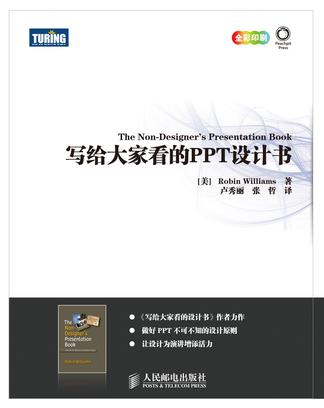
写给大家看的PPT设计书
《写给大家看的PPT设计书》,本书作者围绕PPT 等电子演示文稿的创建与制作,向大家传授了大量的方法原则及经验心得。其中涵盖PPT 准备、内容创建、外观设计的各个流程,同时兼顾配套辅助环节,并创新性地提出了内容优化四原则、外观设计四原则。Robin Williams 亲自设计的版式也让人耳目一新。 -
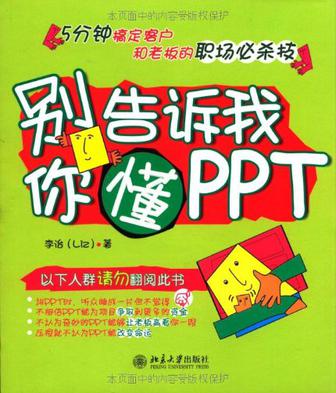
别告诉我你懂PPT
此书不同于其他PPT书籍,并没有讲述如何加入动画、如何调整艺术字等具体的PPT制作技巧,而是教你一种态度,一种让你爱上自己工作的热情,一种提高团队战斗力的工作方式。它是基于PPT之上的创意工作方法,不仅让你的PPT更加漂亮,还让你养成一种正确的职业态度和做人艺术,成为真正的“创新型人才”。 较之以往的版本,加强版的正文会原汁原味地呈现作者在博雅五周年庆典上的演讲PPT,而光盘中除了作者最新的授课视频外,还有书中所有动画的揭秘,以及读者说“这个可以有”、栗子说“这个不愿加”的内容。 -
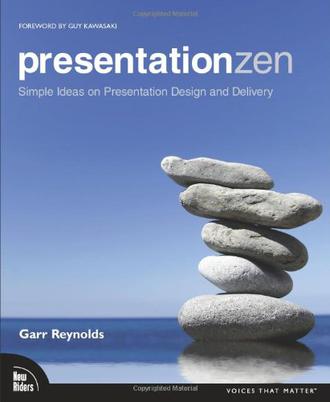
Presentation Zen
FOREWORD BY GUY KAWASAKI Presentation designer and internationally acclaimed communications expert Garr Reynolds, creator of the most popular Web site on presentation design and delivery on the net — presentationzen.com — shares his experience in a provocative mix of illumination, inspiration, education, and guidance that will change the way you think about making presentations with PowerPoint or Keynote. Presentation Zen challenges the conventional wisdom of making "slide presentations" in today’s world and encourages you to think differently and more creatively about the preparation, design, and delivery of your presentations. Garr shares lessons and perspectives that draw upon practical advice from the fields of communication and business. Combining solid principles of design with the tenets of Zen simplicity, this book will help you along the path to simpler, more effective presentations. -
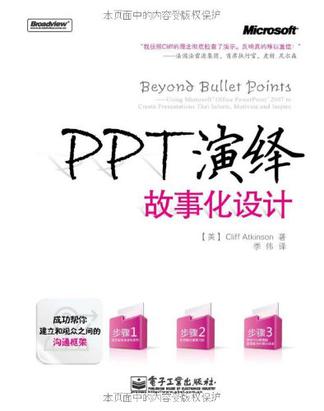
PPT演绎
《PPT演绎:故事化设计》第1版以其出色的销售成绩位列亚马逊网站畅销书榜,并且凭借其影响力成为《纽约时报》、《华尔街日报》和《洛杉矶时报》的头版头条。《PPT演绎:故事化设计》在经过之前几年对团体及个人关于BBP(Beyond Bullet Points)的大量教学、测试,以及应用后,获得了许多宝贵的第一手资料,有了进一步重大改进,强调了许多读者急切需要了解的重要问题,并将等待深入详述的材料进行了充分扩展;同时,对所有实例进行了更新与改进。此外,《PPT演绎:故事化设计》还重点讲解了如何借助PowerPoint 2007应用BBP方法,以及利用PowerPoint 2007软件新功能加快图片设计过程,消除大部分用户可能存在的疑惑。 《PPT演绎:故事化设计》内容丰富、语言简练,通过理论和实例的综合讲解,帮助读者进一步学习如何颠覆常规,借助BBP以全新方式使用PowerPoint 2007制作演示。《PPT演绎:故事化设计》既可帮助PowerPoint初级用户掌握PowerPoint的各种工具和各项基本功能,又可以作为中级用户提升自身设计能力的工具,还可以激发高级用户的设计灵感;因此,适合作为各类大中专院校和电脑培训学校的相关教材,同时也是广大办公人员和电脑爱好者相当实用的自学读物。 -
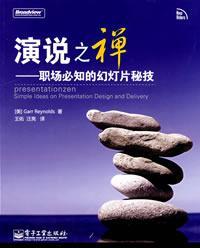
演说之禅
这本书是使读者从幻灯片演示制作的必然王国走向自由王国的最好读物。与目前市场中关于幻灯片制作方面的其他图书不同,这部书讲解的不是幻灯片软件的功能和操作,而是如何从思想上、方法上来思考幻灯片演示。因此本书适合于那些经常使用幻灯片,但是希望使自己制作幻灯片更赏心悦目、形神兼具的读者所使用。 第1部分 介绍 第1章 演示是科学,也是艺术 5 第2部分 准备篇 第2章 创造、限度和约束 31 第3章 一切从构思开始 45 第4章 讲述内容巧安排 75 第3部分 设计篇 第5章 简单是一种美 103 第6章 幻灯片形式设计:从方法到技巧 119 第7章 幻灯片运用范例:图文并茂 165 第4部分 演示篇 第8章 全身心投入 185 第9章 建立沟通的纽带 201 第5部分 行动篇 第10章 开始幻灯片旅行 217 图片来源 224 索引 226 -
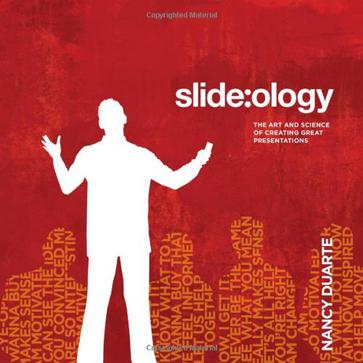
slide:ology
Praise for slide:ology Copyright Dedication Acknowledgments Foreword Introduction Chapter 1. Creating a New Slide Ideology 建立全新的幻灯理念 Section 1.1. Don't Commit Career Suislide 不要委托职业的幻灯制作者 Section 1.2. A Case for Presentations 一个演示案例 Section 1.3. So Where Do You Begin? 从哪里开始? Section 1.4. Case Study: Mark Templeton 案例研究: Section 1.5. The Presentation Ecosystem 演示系统 Section 1.6. World Class Presentations Require Time and Focus 世界级的演示要求时间和焦点 Section 1.7. Responding to Audience Needs 响应听众需求 Section 1.8. How Do You Define Your Audience? 如何定义你的听众 Section 1.9. Case Study: Rick Justice Creating Great Presence 案例研究: Section 1.10. Case Study: ZS Associates An Incentive to Communicate Clearly 案例研究:ZS Chapter 2. Creating Ideas, Not Slides 建立理念,而不是幻灯 Section 2.1. Finding Your Inspiration 找到灵感 Section 2.2. Innovating with Sticky Notes 使用即时贴创新 Section 2.3. Case Study: Bill McDonough 案例研究: Section 2.4. Sketching Your Way to Success 画出成功之路 Section 2.5. Collaborating to Get Clarity ??清晰 Section 2.6. Case Study: Mitchell Baker 案例研究: Section 2.7. Sketching Ideas Using Diagrams 使用图解描绘概念 Section 2.8. Sketching Complete Ideas 描绘完整的概念 Chapter 3. Creating Diagrams 创建图解 Section 3.1. Classifying Diagrams 图解分类 Section 3.2. Abstract Concepts: Flow 抽象概念:流程 Section 3.3. Abstract Concepts: Structure 抽象概念:结构 Section 3.4. Abstract Concepts: Cluster 抽象概念:聚集 Section 3.5. Abstract Concepts: Radiate 抽象概念:发散 Section 3.6. Realistic Concepts: Pictorial 形象概念:插画 Section 3.7. Realistic Concepts: Display Data 形象概念:显示数据--与图表相关的内容 Section 3.8. Making Diagrams Work Together 综合运用图解 Section 3.9. Strengthening the Diagram's Concept 强化图解概念 Chapter 4. Displaying Data 显示数据--本章讲统计图表 Section 4.1. Following the Five Data Slide Rules 五条数据幻灯原则 Section 4.2. Telling the Truth 说出事实 Section 4.3. Getting to the Point 说出重点 Section 4.4. Picking the Right Tool for the Job 使用正确的工具 Section 4.5. Highlighting What's Important 强调重要的 Section 4.6. Chart Makeovers 图表美化 Section 4.7. Case Study: Healthy Waters 案例研究: Chapter 5. Thinking Like a Designer 象设计师一样思考 Section 5.1. The Value of Design 设计的价值 Section 5.2. Revealing Yourself Through Design Decisions ??设计决策 Section 5.3. Case Study: Al Gore 案例研究:Al Gore(美国前副总统) Section 5.4. Designing Effective Slides 设计有效的幻灯 Chapter 6. Arranging Elements 安排元素 Section 6.1. Placement of Elements Creates Meaning 元素的位置有意义 Section 6.2. Contrast: Identifying the Main Point Quickly 对比:快速识别主要点 Section 6.3. Flow: Ordering How the Information Is Processed 流程:排序信息处理流程 Section 6.4. Hierarchy: Seeing Relationships Between Elements 层次:发现元素之间的联系 Section 6.5. Unity: Sensing the Structure of Information 联合:了解信息结构 Section 6.6. Case Study: Adobe Controlling 案例研究: Section 6.7. Proximity: Perceiving Meaning from Location 就近:感知位置意义 Section 6.8. Whitespace: Getting Visual Breathing Room 留白:留下视觉上的喘息空间 Section 6.9. Case Study: Garr Reynolds 案例研究:Garr Reynolds(演示之禅的作者) Section 6.10. Finding Beauty in the Design Around You 发现身边的设计之美 Chapter 7. Using Visual Elements: Background, Color, and Text 使用视觉元素:背景,颜色,文本 Section 7.1. The Ingredients of a Great Slide 卓越幻灯的要素 Section 7.2. Background 背景 Section 7.3. Backgrounds Are a Surface for Digital Assets 背景是数字资产的外表 Section 7.4. Traversing Flatland and Dimensions ??平面和维度 Section 7.5. Creating a Sense of Space 建立空间感 Section 7.6. Determining the Light Source 决定光源 Section 7.7. Color 颜色 Section 7.8. About the Color Wheel 色彩轮 Section 7.9. Using the Power of Color 使用颜色的力量 Section 7.10. Choosing Your Colors 选择你自己的颜色 Section 7.11. Using Industry Color Palettes 使用行业颜色板 Section 7.12. Assembling a Color Palette 配置颜色板 Section 7.13. Case Study: BzzAgent 案例研究: Section 7.14. Text 文本 Section 7.15. Dissecting a Font 解剖字体 Section 7.16. How Many Words Should Be on a Slide? 一张幻灯上多少字 Section 7.17. Typesetting 排版 Section 7.18. Typesetting a Block of Text 排版大量文字 Section 7.19. Obeying Gun Laws and Bullet Laws 遵从??原则 Section 7.20. Validating Your Font Size 验证字体大小 Section 7.21. Playing Text Animations as the Audience Enters 使用文字动画 Chapter 8. Using Visual Elements: Images 使用视觉元素:图片 Section 8.1. Assembling an Image System 配置图片系统 Section 8.2. Photography 摄影 Section 8.3. Case Study: School District 案例研究: Section 8.4. Taking Your Own Photos 使用自己的照片 Section 8.5. Illustrations 插图 Section 8.6. Creating an Illustration Library 建立插画库 Section 8.7. Illustrating Complex Stories 图解复杂的故事 Section 8.8. Stylizing Diagrams and Illustrations 风格化图示和图解 Section 8.9. Case Study: Dr. Mike Magee 案例研究: Section 8.10. Case Study: Incorporating Video 案例研究: Chapter 9. Creating Movement 建立运动 Section 9.1. Designing Time-Based Scenes 设计基于时间的场景 Section 9.2. Planning Animations 计划动画 Section 9.3. Animating Serves a Purpose 动画服务于目标 Section 9.4. Taking Lessons from the Movies 从电影学习 Section 9.5. Making Objects Move and Change 让对象运动和改变 Section 9.6. Creating Panoramas and Scenes 建立全景图 Section 9.7. Creating Scenes, Not Slides 建立场景,而不是幻灯 Section 9.8. Case Study: Guerrino De Luca 案例研究: Section 9.9. Brainstorming Meaningful Metaphors 头脑风暴有意义的隐喻 Section 9.10. Case Study: Rare 案例研究: Section 9.11. Avoiding Visual Vertigo 避免视觉眩晕 Chapter 10. Governing with Templates 用模板管理 Section 10.1. Arming Your Workforce 武装你的工作人员 Section 10.2. Making Template Design Decisions 制定模板设计原则 Section 10.3. Case Study: Hewlett-Packard 案例研究:HP Section 10.4. Experimenting with Various Looks 尝试不同的外观 Section 10.5. Following Template Guidelines 遵守模板指南 Section 10.6. Building Presentations Collaboratively 协同建立演示 Chapter 11. Interacting with Slides 与幻灯交互 Section 11.1. The Power of Constraints 约束的力量 Section 11.2. Constraining the Text 约束文字 Section 11.3. Reducing Text on a Slide 减少文字 Section 11.4. Navigating Through Your Message 导航你的信息 Section 11.5. Constraining the Length 控制长度 Section 11.6. Case Study: Pecha Kucha 案例研究: Section 11.7. Constraining the Projector 控制投影仪 Section 11.8. All the World's a Stage 世界的舞台 Section 11.9. How Many Slides? Use the 10/20/30 Rule. 多数张幻灯?10/20/30原则 Section 11.10. How Many Slides? The Sky Is the Limit. 多数张幻灯?天高任鸟飞 Section 11.11. How Many Slides? Depends on the Technology. 多数张幻灯?看使用的技术 Section 11.12. To Project or Not to Project 投影还是不投影 Section 11.13. Case Study: John Ortberg 案例研究: Section 11.14. Small Device, Big Impact 小设备,大印象 Section 11.15. Case Study: Jill Bolte-Taylor 案例研究: Section 11.16. A Call to Relate ?? Chapter 12. Manifesto: The Five Theses of the Power of a Presentation 纲领:5个观点 Section 12.1. Treat Your Audience as King 以听众为中心 Section 12.2. Spread Ideas and Move People 传播理念、感动人们 Section 12.3. Help Them See What You're Saying 让他们看到你所说的 Section 12.4. Practice Design, Not Decoration 学习设计,而不是装饰 Section 12.5. Cultivate Healthy Relationships 加强有益的联系 References Index